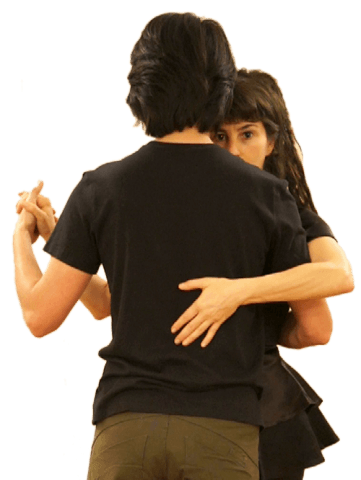This post is the beginning of an investigation which I hope to continue in further discussions and observation.
I was never interested in DJing, but more and more it becomes part of my work, as I host practicas and milongas. I have collected a nice library of music. Some days I really can’t stand any of the traditional music, and other days putting together a playlist makes me excited to dance.
People seem to like to complain about the music. It doesn’t worry me much because I think everyone is different and there’s no way to please them all. I am committed to playing 25% alternative music in keeping with my beliefs about dancing to culturally familiar music in order to access the emotional depths of what tango can offer.
For the other 75%, my tendency has been to put together a playlist by playing one tanda of tangos from each of the major classical composers. I figure that for the traditional stuff I should give people mainline what they are accustomed to, so I usually don’t play modern orquestras. (Also most of them seem to play the traditional songs in a manner that strikes me as harsh and violent, but that’s just me.) For the vals and milonga tandas, I also tend to stay with the most classic and easy composers, leaning heavily to Canaro for milonga and Biagi for vals.
My personal taste is that I prefer very slow music, so my alternative/nuevo tandas are never electro tango or Otros Aires (which sounds more like milonga to me than tango). I play extremely slow, dreamy music. And that’s my taste for tangos too. When I played a traditional tango of Gardel the other night, people said “it’s so boring” and I understood that’s because it was slow. I can lead to any slow music, even if I haven’t heard it before because I can feel what is coming.
That’s all background to the point of this post.
As a follower putting together a playlist, every traditional song in my library sounds familiar. It’s already in my body. I can feel myself dancing to it. So they are all in some ways familiar. There are certainly days when I cannot bear Bahia Blanca again, but generally it all sounds equivalently danceable and equivalently appealing.
When leaders scowl over a traditional tango tanda, I never quite understand it. (I do of course understand if they scowl over a modern orquestra or nuevo tango.)
Certainly I know that each leader has their composer, the one who really brings them out. I can feel it right away if they are not dancing to the right guy. But if you go out dancing 4-5-6 nights a week, you are going to be familiar with all the classics.
As a follower, my musicality is deferent. In the sense that if I want to dance with Mr. X I’m going to have to dance to the music he chooses. I don’t get to be so picky. Of course I do seek out Mr. Y when I hear a milonga I like and I do avoid Mr. Q for vals, but I’m not always so picky, and largely because I’ve danced to all of it, so it just doesn’t make much difference to me. My body knows every note of every traditional song, so I don’t need to be picky.
Moreover, as a follower, I have to dance first to my leader, second to the music. So if he hears a part of the music inaudible to me, I have to dance to his body anyway. The music is not my primary responsibility, so it’s not determinative of my dance as a follower.
Leaders, on the other hand, seem more vulnerable to the music, and therefore get more grumpy about it. I have found myself on the dance floor leading to a modern orquestra that seems to have a panic attack mid-song, and that’s not fun. And there are some eastern european milonga arrangements that seem to wander off muttering to themselves, but I feel comfortable leading to any of the classics. So I don’t really understand leader’s distinctions among the classics.
As a follower first, then, when I go to DJ, it’s all fine.














